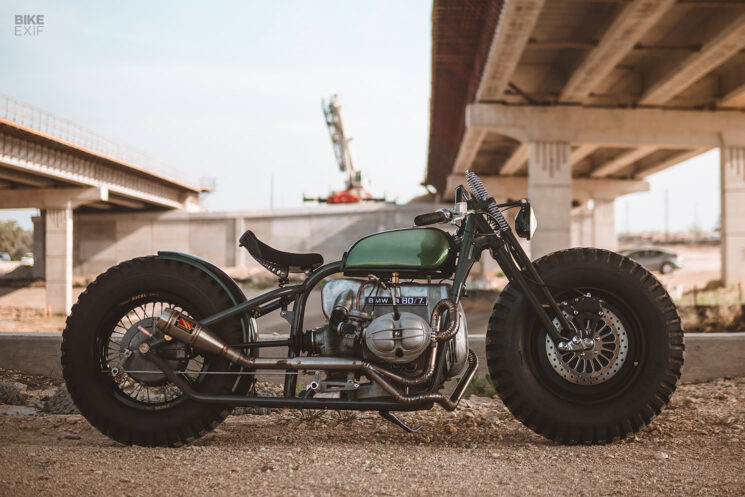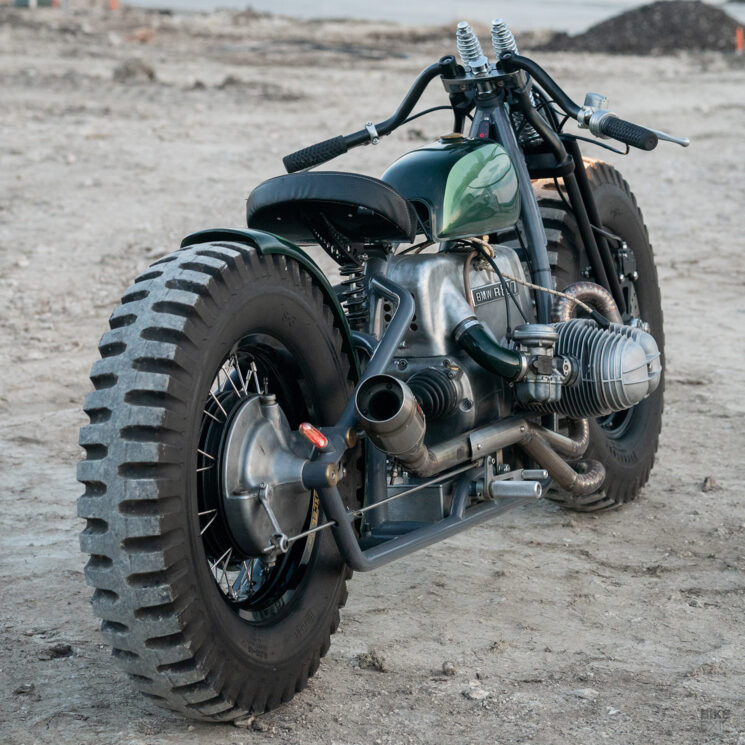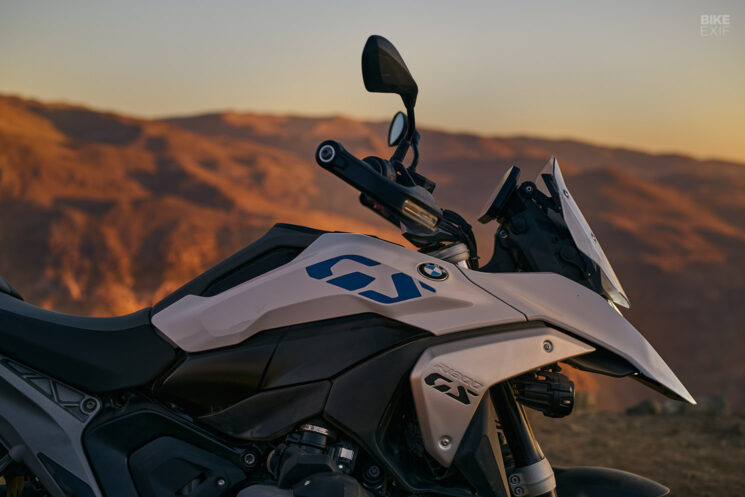
We say it time and time again, but you’d be hard-pressed to find a more impressive assortment of rare motorcycles and parts than at Bonhams’ Stafford sale—made even more exciting by the fact that they’re for sale. Beyond the irreplaceable competition cycles from Europe’s most storied marques, you’ll find an assortment of rare project bikes, vintage race gear and incredibly rare parts. Where else would you shop for a Scott fuel tank, a frame section from a Vincent Black Shadow or forks from a four-cylinder Henderson?
Bonhams’ 2023 Autumn Stafford Sale takes place October 14-15 at the Staffordshire County Showground in the U.K., with 480 lots going to the highest bidder. Picking favorites is tough among such company, but here are just a few of the classic bikes that caught our attention.

1979 Ducati 864 cc Mike Hailwood Replica Mike Hailwood is without a doubt one of the most talented and grittiest riders in the history of motorcycle road racing. Dubbed ‘Mike the Bike’ for his ability to podium on a machine of just about any capacity, Hailwood’s record is highlighted by 76 Grand Prix victories, 14 Isle of Man TT wins and four consecutive world championships—not to mention a third place ride in the 24 Hours of Le Mans in a GT40.

In 1978, a struggling Ducati found its poster child in Hailwood after a stunning come-from-behind win in the F1 class at the Isle of Man. Aged 38, and largely out of the limelight for 11 years, Hailwood wasn’t considered a serious threat to the full might of the Honda works team. Nonetheless, Hailwood rode his ex-works Ducati 900 SS to victory in the F1 class before retiring for good in 1979.

Recognizing the miracle bestowed on them, Ducati quickly launched a special Mike Hailwood Replica version of the 900 SS to capitalize on the hype. The model offered mostly cosmetic enhancements over the standard SS, most notably the full fairing finished in red and green with a select few of Hailwood’s sponsorship decals. The brakes were upgraded to Brembos, lighter wheels were sourced from Campagnolo and a fiberglass race-replica tank concealed a street-legal steel fuel reservoir.
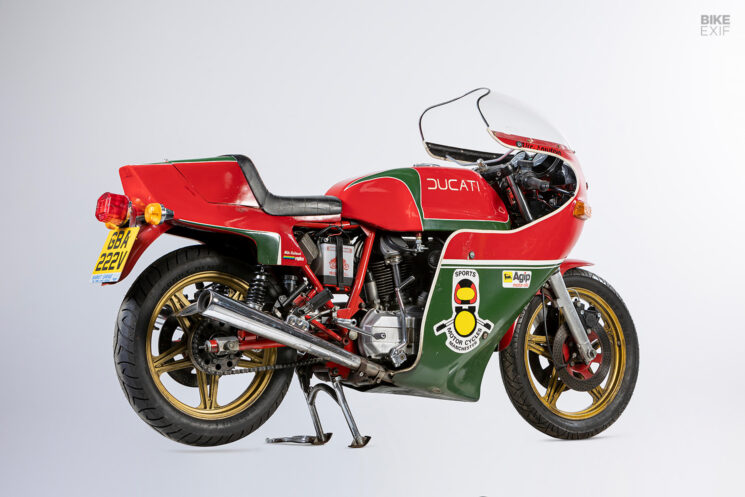
Hailwood Replicas are around, Ducati sold roughly 6,000 examples, but it’s the sequence number that makes Lot 440 special. Stamped 900010, this Hailwood Replica is not only one of the unique and desirable first 200 units built, but it was the 10th off the line, and likely one of the first to be sold to a customer.
Boasting a well-documented history, its original engine and the desirable early sequence number, this Mike Hailwood Replica Ducati is expected to bring between £14,000 and £18,000. ($17,075-$21,954)

Norton-Vincent 998 cc ‘Norvin’ Special Sometimes the best bike isn’t one that comes from a single manufacturer, and if you were on a budget in the 1950s and ’60s, a competitive machine could be had if you were a bit resourceful. Combining the best components from several manufacturers led to the creation of numerous hybrid specials in that era, but the Norton ‘featherbed’ frame was almost always a common denominator.

Rex and Cromie McCandless developed the featherbed frame for Norton to replace the old ‘garden gate’ plunger frame for their race bikes, and the first frames were track tested in 1949. The frames were expensive and required a great deal of skilled labor to build, but the final product would soon be regarded as the best handling chassis available. So superior was the new frame over the outgoing model, that racer Harold Daniell remarked that it was like “riding on a featherbed” compared to riding the “garden gate.”
So it comes as no surprise that all manner of engines were fit in the Norton chassis over the following two decades, and the hybrid motorcycles were aptly named Triton (Triumph-Norton), Norbsa (Norton-BSA) and even Norvin (Norton-Vincent).
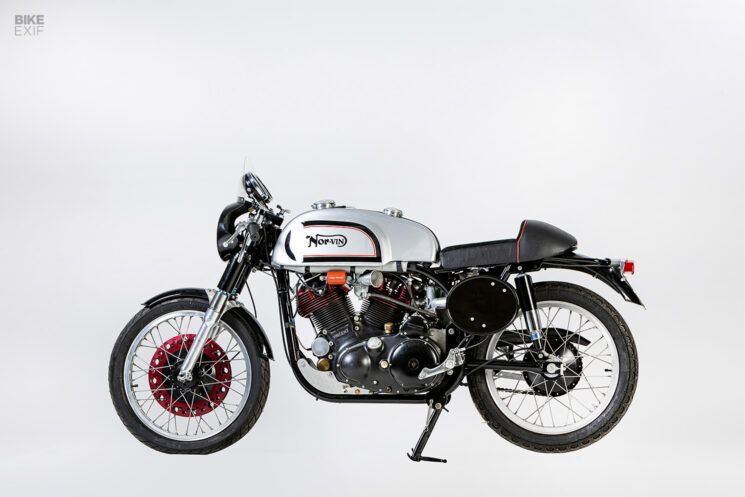
Lot 476 is a fine example of a Norton-Vincent hybrid that was constructed with the engine from a Series-D Black Knight. The same mill used in the Rapide, the 998 cc V-twin was good for 45 bhp at 5,750 rpm, and looks quite handsome in the Norton chassis.
Unfortunately, there’s no mention of when the bike was first assembled, and we only know that the restoration was completed in 2005 by John Mossey Restorations. If the bike does have period history, it would certainly be worth knowing, as the Norvin is a particularly attractive piece, even without its exhaust. Bonhams estimates that this Norvin special will bring £16,000 to £20,000. ($19,515-$24,394)

1959 Norton Manx Wearing a crude livery, and weathered significantly from over 40 years of barn storage, this assemblage of Norton parts isn’t likely to make many highlight reels from Bonhams’ Stafford Sale. While the bike has some minor prestige connecting it to Dan Shorey, the appeal for us is all visual—the sort of presence you could design a room around.

What you’re looking at here started life as a 1959 Norton 350 cc Manx, which was originally delivered to British privateer Dan Shorey. The bike went through several owners after Shorey sold it in ’63, and is said to have been raced by Keith Smith and John Pounder in the early 1970s.

Along the way, the Manx was repowered with a 497 cc twin from a Norton Dominator 88, fit with the upgraded 500 SS cylinder head—making theoretical output somewhere in the neighborhood of 36 bhp. The transmission and rear hub have also been swapped to standard Dominator equipment as well.
While this Norton Manx bears little resemblance today to the bike that was delivered to Shorey more than 60 years ago, it remains a fascinating look into the lifespan of privateer race machines during road racing’s golden era. £7,500 to £9,500 ($9,150-$11,590) is a pretty price to pay for the new cornerstone of your mancave, but let’s chalk it up as an investment.

1979 Bimota 1,015 cc KB1 The construction of hybrid race bikes wouldn’t remain an at-home, torch-and-hammer, sort of affair forever, and by the 1970s, a few specialist firms had established themselves as premier chassis builders for the hottest bike engines. Born of necessity in the mid-’70s, Italian Bimota would become one of the most well-known chassis manufacturers for high-output Japanese powerplants.
Three friends, Valerio Bianchi, Giuseppe Morri, and Massimo Tamburini, worked together in HVAC to fund their love of motorcycles. Tamburini did some racing on the side, and it’s said that he suffered a wreck at Misano Circuit in 1972 on his Honda 750, prompting him to design a completely new chassis for the bike. Setting a precedent for Bimota, Tamburini’s completed 750 was over 100 pounds lighter than stock, and was dubbed the HB1.

Bimota’s subsequent designs far exceeded Japan’s lagging chassis technology, making the most out of high-output multi-cylinders like Suzuki’s GS 750s and 1,000s, Yamaha’s TZ 350 and FZ 750 and Kawasaki’s 900 Z1 and several other Zs. The company had many successes in road racing, before succumbing to financial difficulties in the late ’90s. The revived Bimota, as we know it today, has several wild models in the stable that utilize hub-centric steering, and is 49% owned by Kawasaki.
Lot 428 is a 1979 Bimota KB1, and is a fascinating example of early Bimota tubular spaceframe design. One of 827 built, this KB1 is powered by the mighty air-cooled Kawasaki Z1000 four-cylinder. Producing 84 hp, and weighing 419 pounds dry, the KB1 would show the taillights to any stock Z1000, as it’s nearly 100 pounds lighter, and would do 138 mph flat out. Bonhams’ estimate for this particular Bimota KB1 is between £12,000 and £15,000. ($14,636-$18,296)

1957 Ariel 499 cc HS5 The HS5 is not one of Ariel’s most noteworthy models—it’s certainly no Square Four or Red Hunter—and was not a commercial success for the company. Late to the party in swing-arm technology, Ariel’s dirt-friendly models couldn’t match the success of Triumph or BSA and were dropped completely by 1959. But viewing the HS5 through a modern lens, I can’t imagine a more thrilling day on the dirt.
Built in utilitarian fashion, there’s truly nothing frivolous about the HS5. It’s nothing more than a basic seat, tank and some rudimentary suspension. Power came by way of a 499 cc single, a true thumper, exhaling through a seemingly unbaffled single swept exhaust. Imagine the decibels…
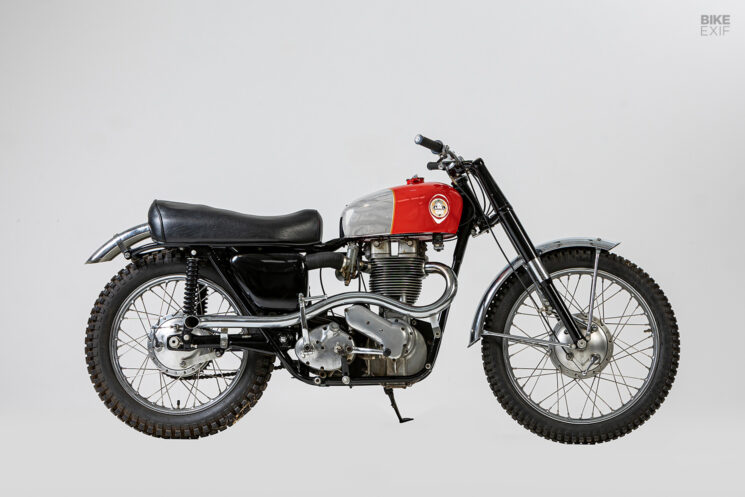
Marketed towards the discerning weekend warrior, the majority of Ariel’s HS5 production would be sent to the states, where the riding scene was booming. This particular Ariel was, in fact, sold new in California.
While there’s more than a decade between them, I can’t help but picture some Steve McQueen, On Any Sunday, type of hooning around on this Ariel—an honest look at what the early world of off-road riding was like. But considering the rarity of this machine, and the requisite £7,000 to £10,000 ($8,538-$12,197) auction estimate, this Ariel HS5’s last day in the dirt is behind it. [Bonhams]

from Bike EXIF https://ift.tt/sEJl9pV
